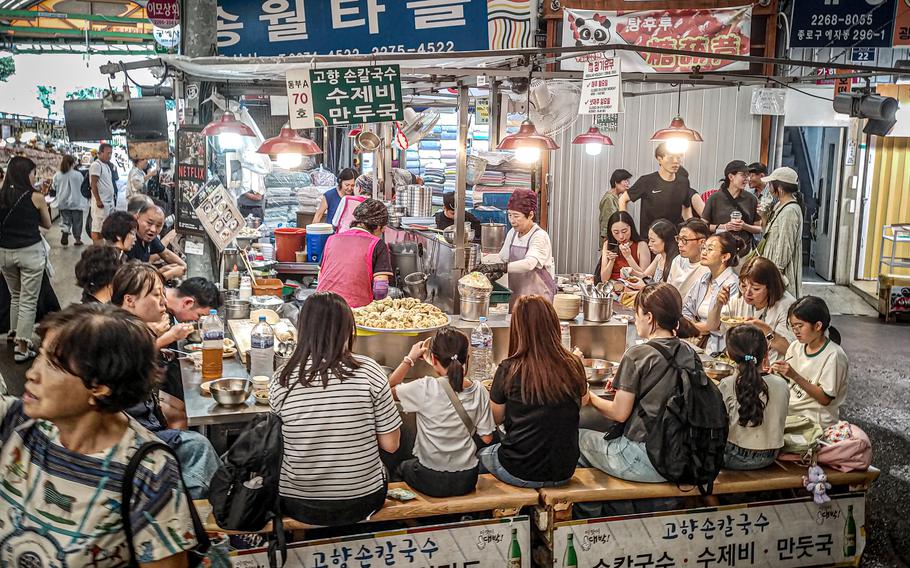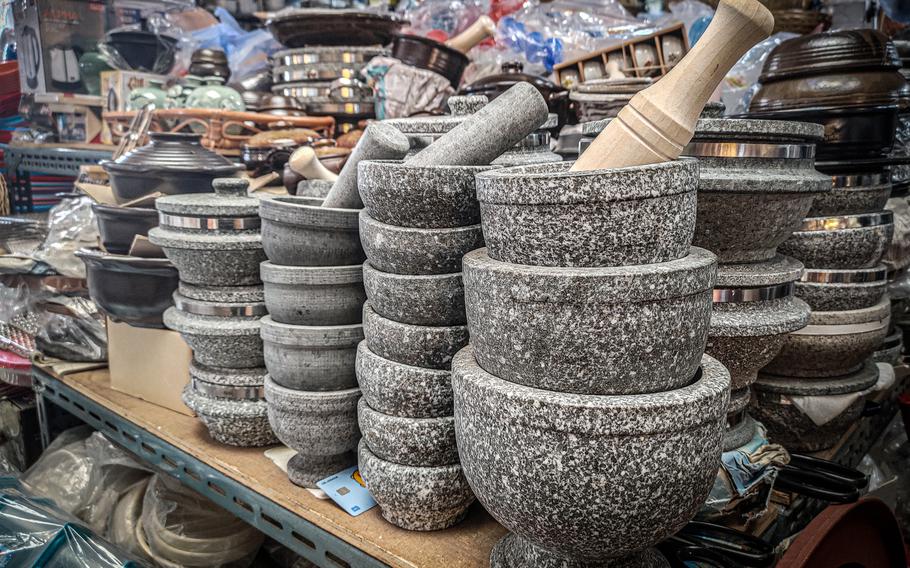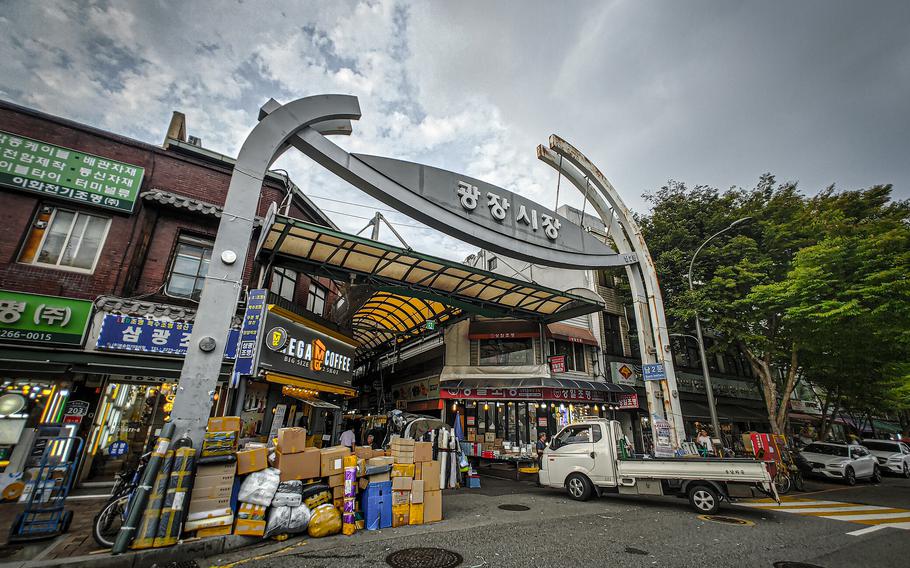
Customers eat at a food stand inside Gwangjang Market in Seoul, South Korea, Sept. 19, 2024. (Luis Garcia/Stars and Stripes)
Tucked away in the bustling heart of Seoul, Gwangjang Market is a slice of the city’s history nearly 120 years old.
Open since 1905, this traditional market offers a unique blend of local culture, street food and Korean craftsmanship. Despite the rapid modernization surrounding it, Gwangjang has remained a constant and thriving hot spot for locals and visitors who are eager to experience authentic Korea.
Entering the market, you are greeted by a flurry of sounds, scents and sights. Vendors enthusiastically call out from their stalls, each one offering a different variety of Korea’s most famous street foods.
It’s hard to resist the temptation of tteokbokki, chewy rice cakes covered in spicy chili sauce, or bindaetteok, a crispy mung bean pancake, that sizzles as it is fried right in front of you. The mayak kimbap, bite-sized rolls of rice and vegetables wrapped in seaweed, are another popular option.
As you move deeper into the market, the atmosphere becomes even more lively. Steam rises from stalls selling hot bowls of soondae, a type of blood sausage, and the sweet smell of freshly made hotteok, a pancake filled with syrup, fills the air. Shoppers squeeze into small, makeshift seating areas, sharing tables with strangers, as they dive into their meals.

Mortars and pestles are for sale inside Gwangjang Market in Seoul, South Korea, Sept. 19, 2024. (Luis Garcia/Stars and Stripes)
While the food scene might be the star attraction, Gwangjang also has its roots in Korean craftsmanship. Rows of shops display colorful hanboks, traditional Korean clothing, along with silks and household goods. Even if you’re not planning to buy anything, wandering through the aisles is its own experience, a glimpse into Korea’s rich cultural heritage.
What sets Gwangjang apart from other markets is its blend of old and new. Despite being a favorite among tourists, it still feels like a local spot, where the city’s history comes alive in every stall and vendor interaction.
Whether you come for the food, the shopping, or just to take in the atmosphere, Gwangjang Market offers an exceptional experience.

Open since 1905, Gwangjang Market offers a blend of local culture, street food and South Korean craftsmanship. (Luis Garcia/Stars and Stripes)
On the QT
Directions: 88 Changgyeonggung-ro, Jongno-gu, Seoul, South Korea; a 3-minute walk from Jongno 5-go Station.
Times: Open 9 a.m. to 6 p.m. Monday through Saturday; closed Sunday; street food stands open daily 9 a.m. to 11 p.m.
Cost: No entry fee.
Food: The market is filled with food stands and restaurants.
Information: Online: kwangjangmarket.co.kr/en